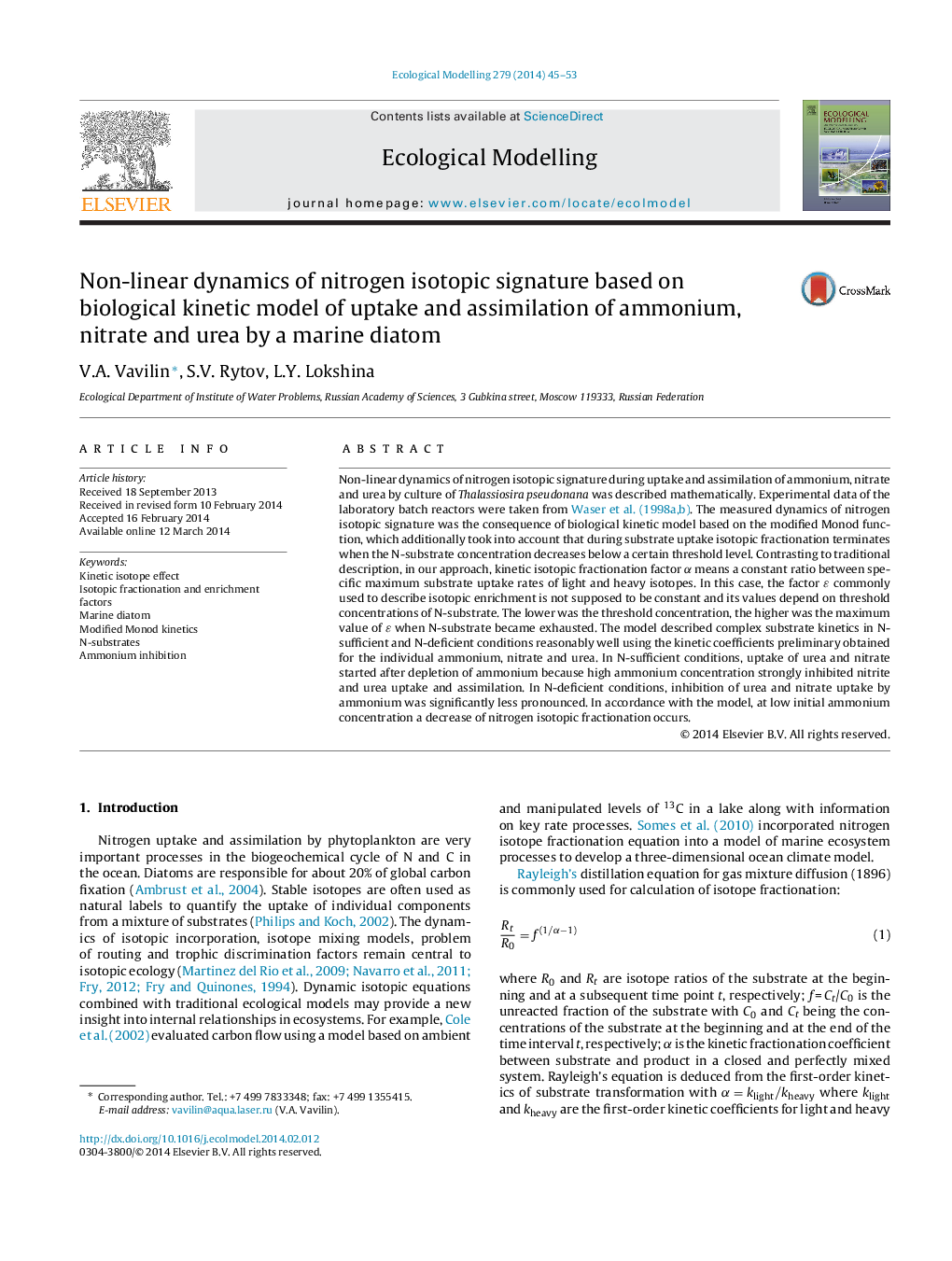| Article ID | Journal | Published Year | Pages | File Type |
|---|---|---|---|---|
| 4375973 | Ecological Modelling | 2014 | 9 Pages |
•Dynamics of nitrogen isotopic signature is related to biological kinetics.•Biological kinetics based on empirical Monod function with threshold substrate level.•High change of δ15N occurred during ammonium consumption in substrates mixture uptake.•Simultaneous uptake of urea and nitrite occurred later due to ammonium inhibition.•Initial ammonium concentration effected on isotopic fractionation.
Non-linear dynamics of nitrogen isotopic signature during uptake and assimilation of ammonium, nitrate and urea by culture of Thalassiosira pseudonana was described mathematically. Experimental data of the laboratory batch reactors were taken from Waser et al., 1998a and Waser et al., 1998b. The measured dynamics of nitrogen isotopic signature was the consequence of biological kinetic model based on the modified Monod function, which additionally took into account that during substrate uptake isotopic fractionation terminates when the N-substrate concentration decreases below a certain threshold level. Contrasting to traditional description, in our approach, kinetic isotopic fractionation factor α means a constant ratio between specific maximum substrate uptake rates of light and heavy isotopes. In this case, the factor ɛ commonly used to describe isotopic enrichment is not supposed to be constant and its values depend on threshold concentrations of N-substrate. The lower was the threshold concentration, the higher was the maximum value of ɛ when N-substrate became exhausted. The model described complex substrate kinetics in N-sufficient and N-deficient conditions reasonably well using the kinetic coefficients preliminary obtained for the individual ammonium, nitrate and urea. In N-sufficient conditions, uptake of urea and nitrate started after depletion of ammonium because high ammonium concentration strongly inhibited nitrite and urea uptake and assimilation. In N-deficient conditions, inhibition of urea and nitrate uptake by ammonium was significantly less pronounced. In accordance with the model, at low initial ammonium concentration a decrease of nitrogen isotopic fractionation occurs.
